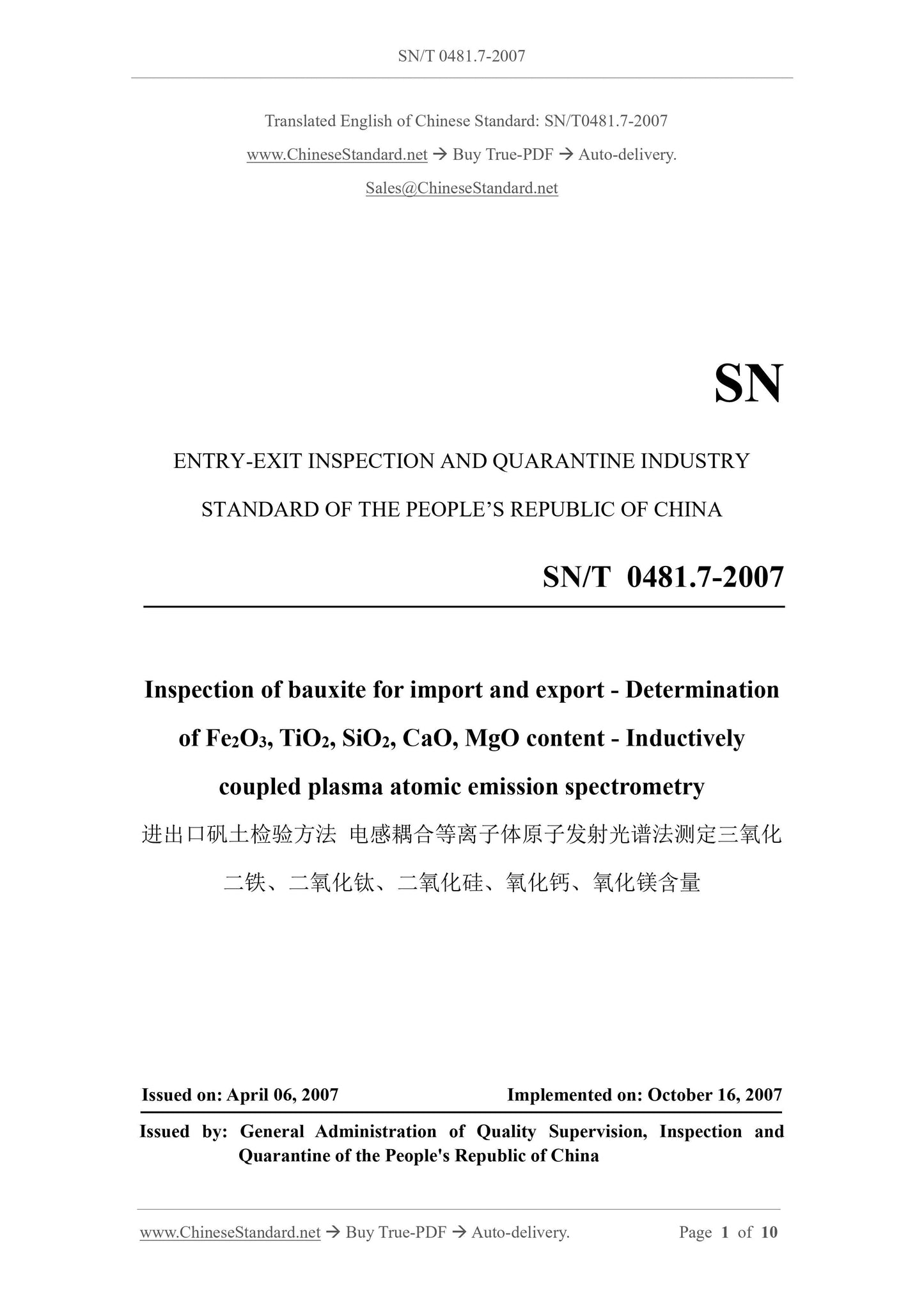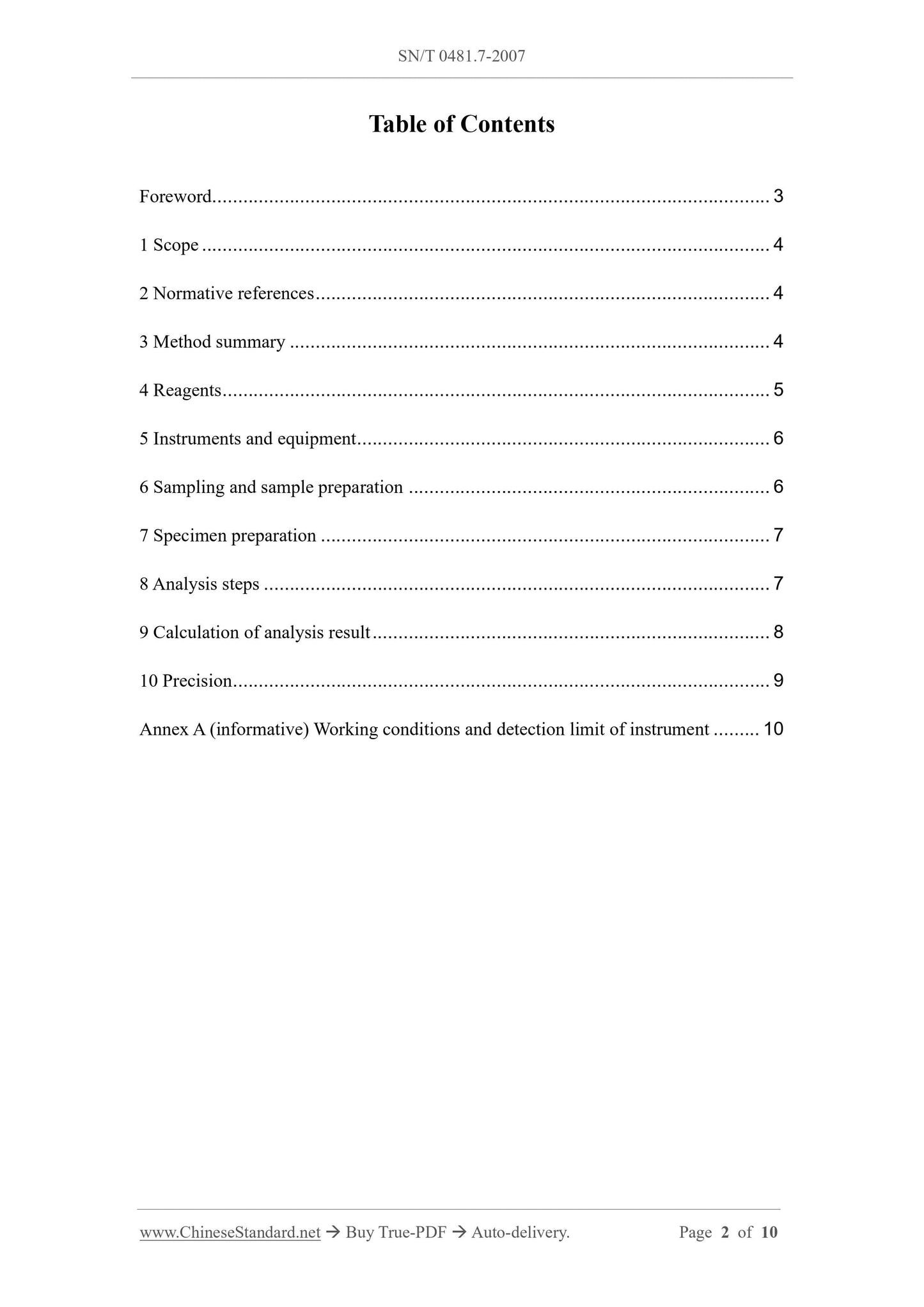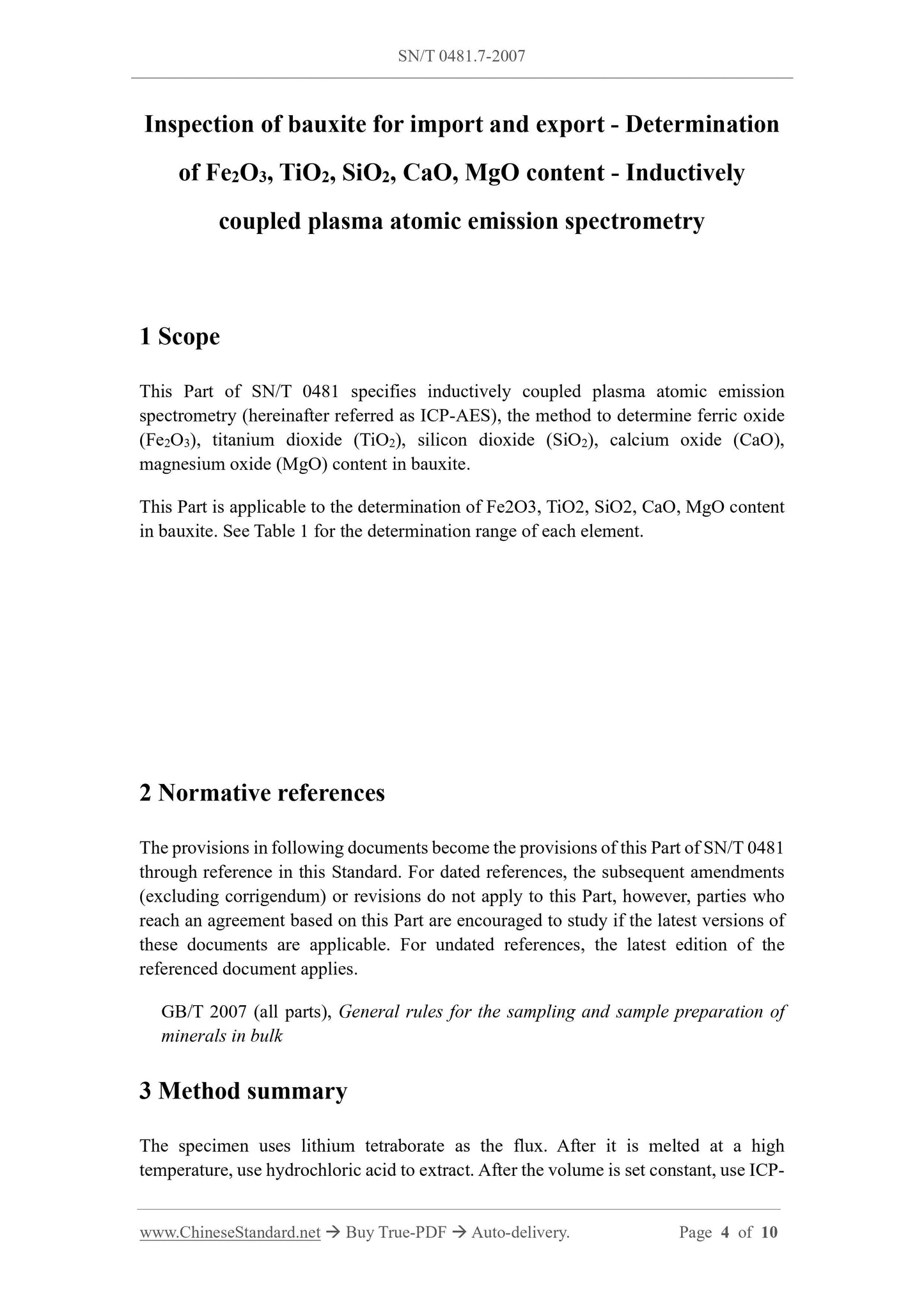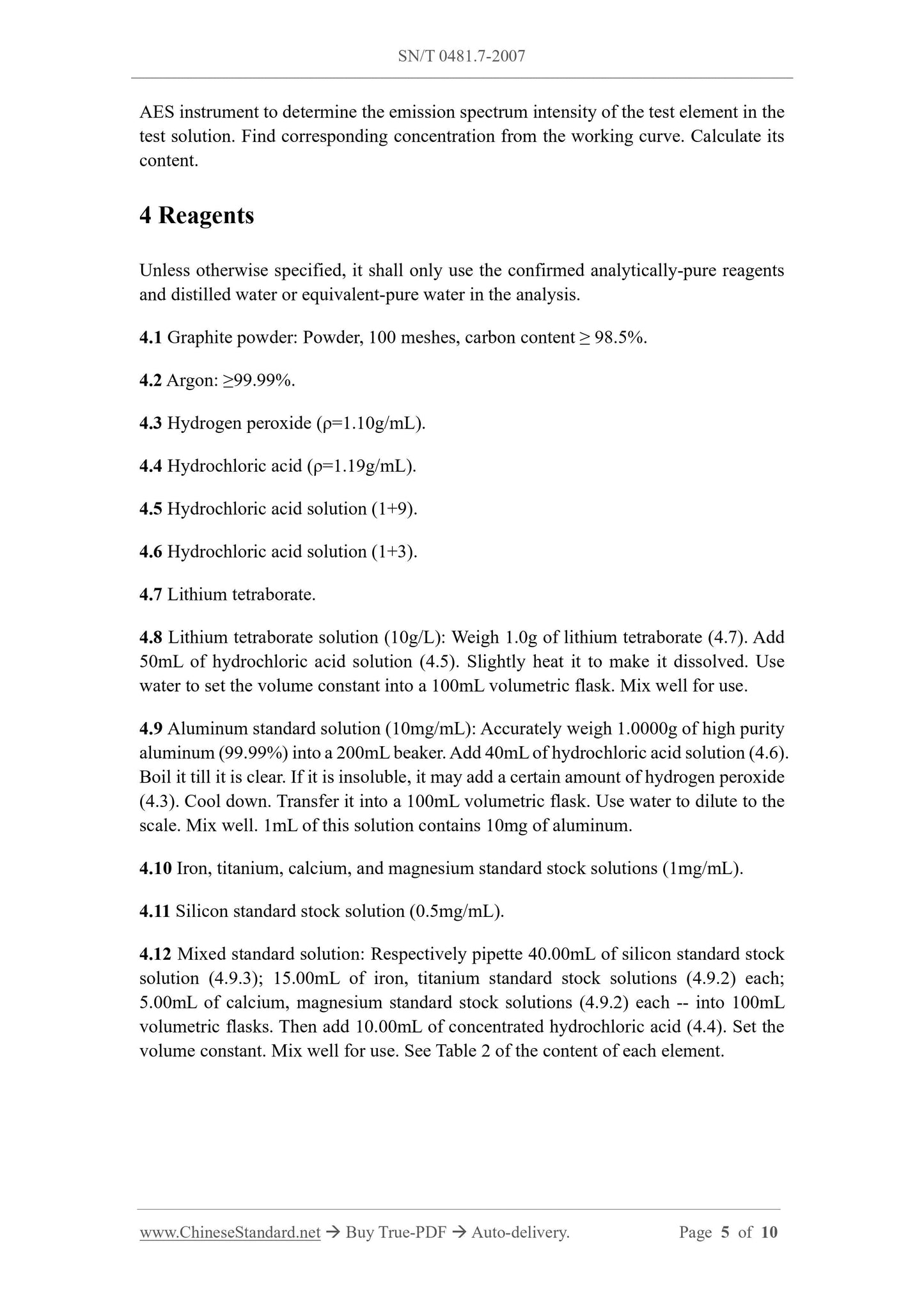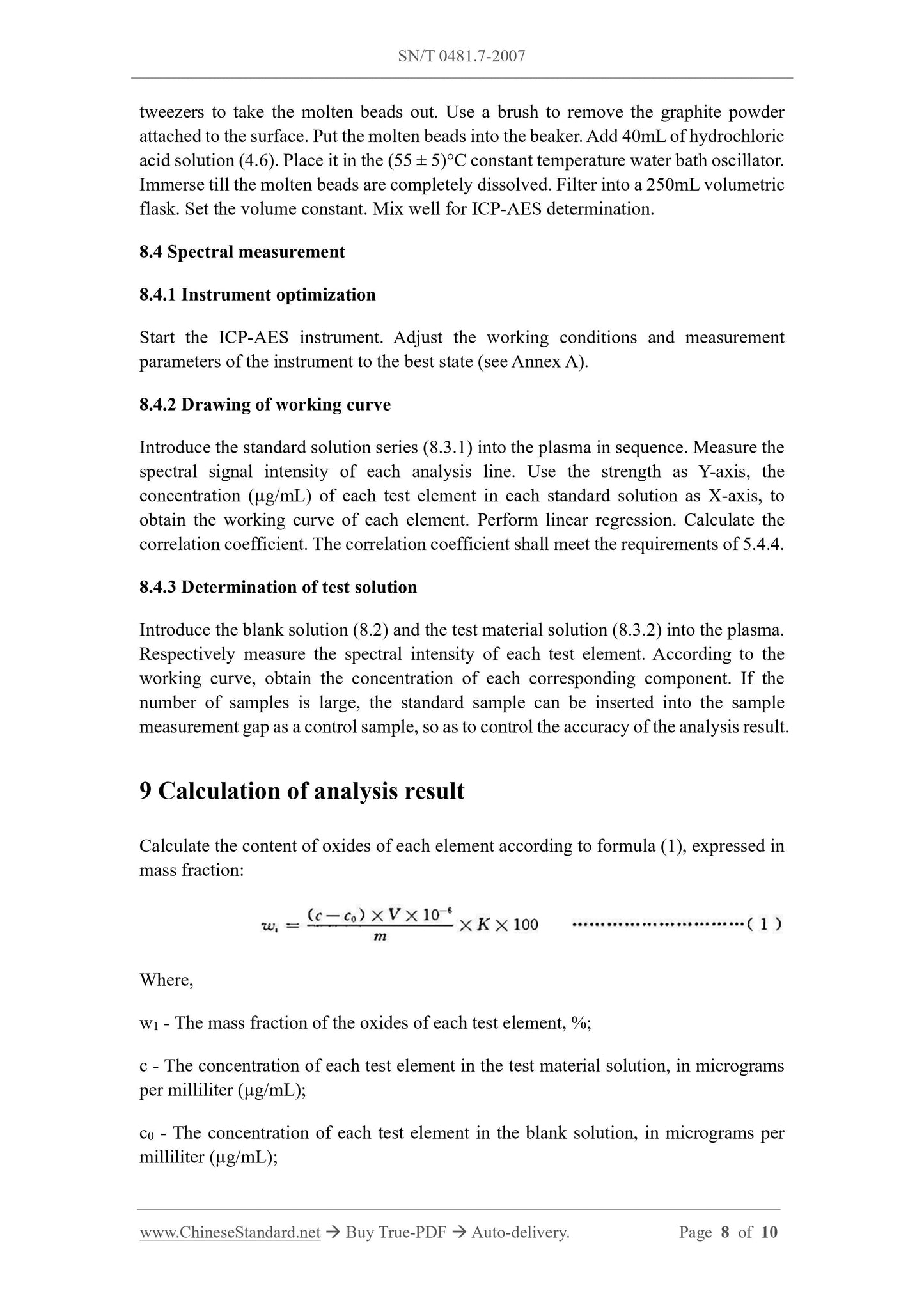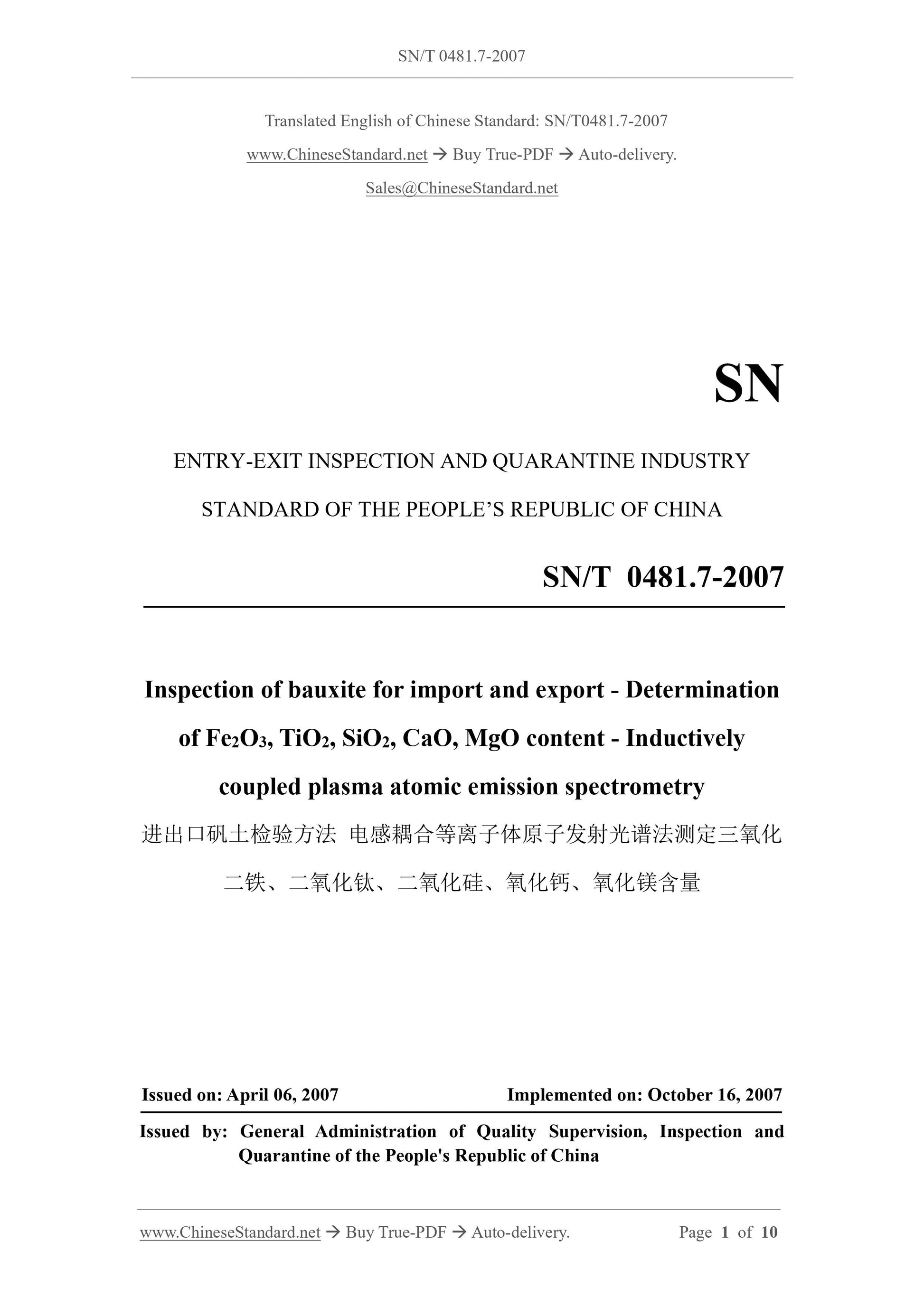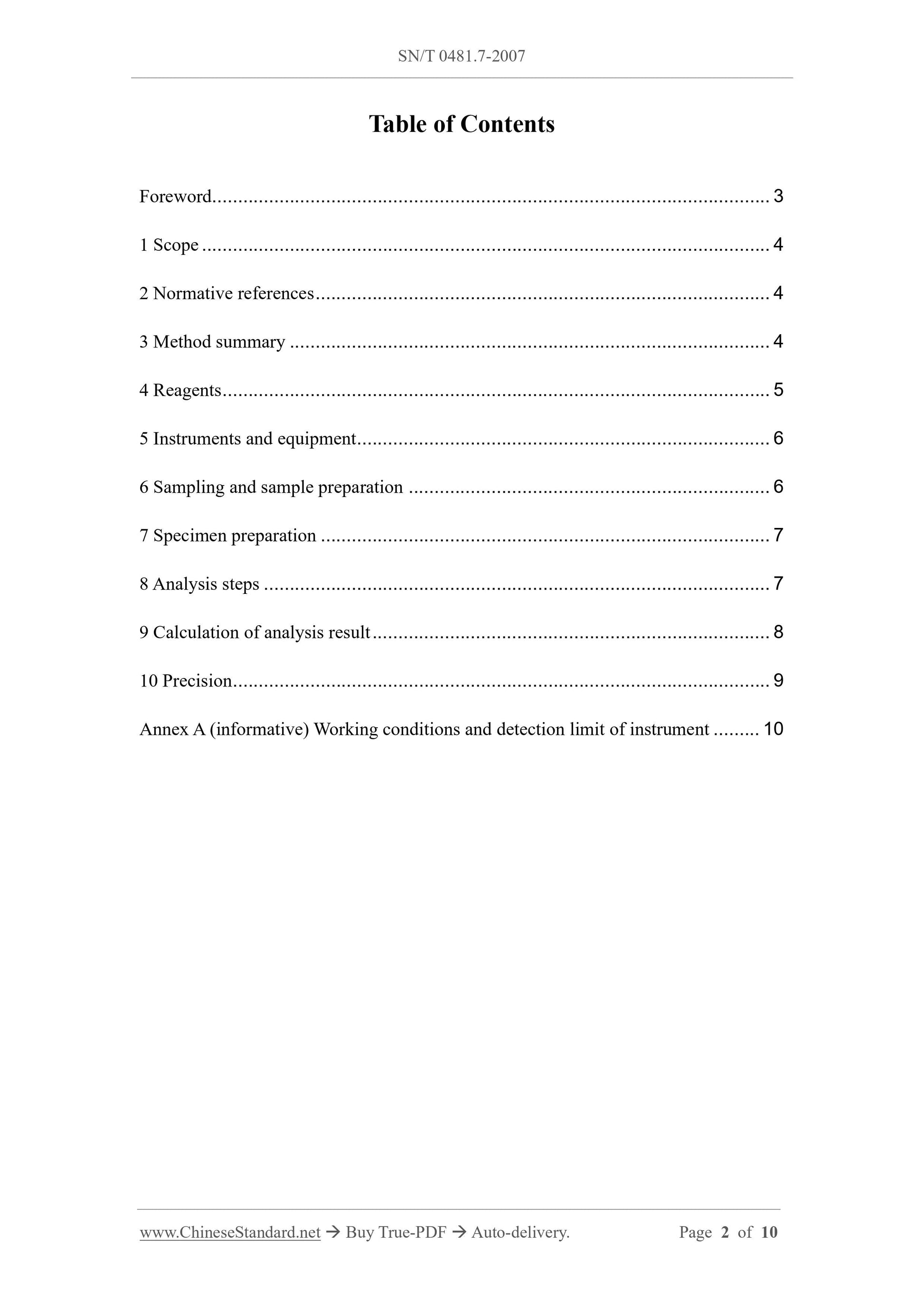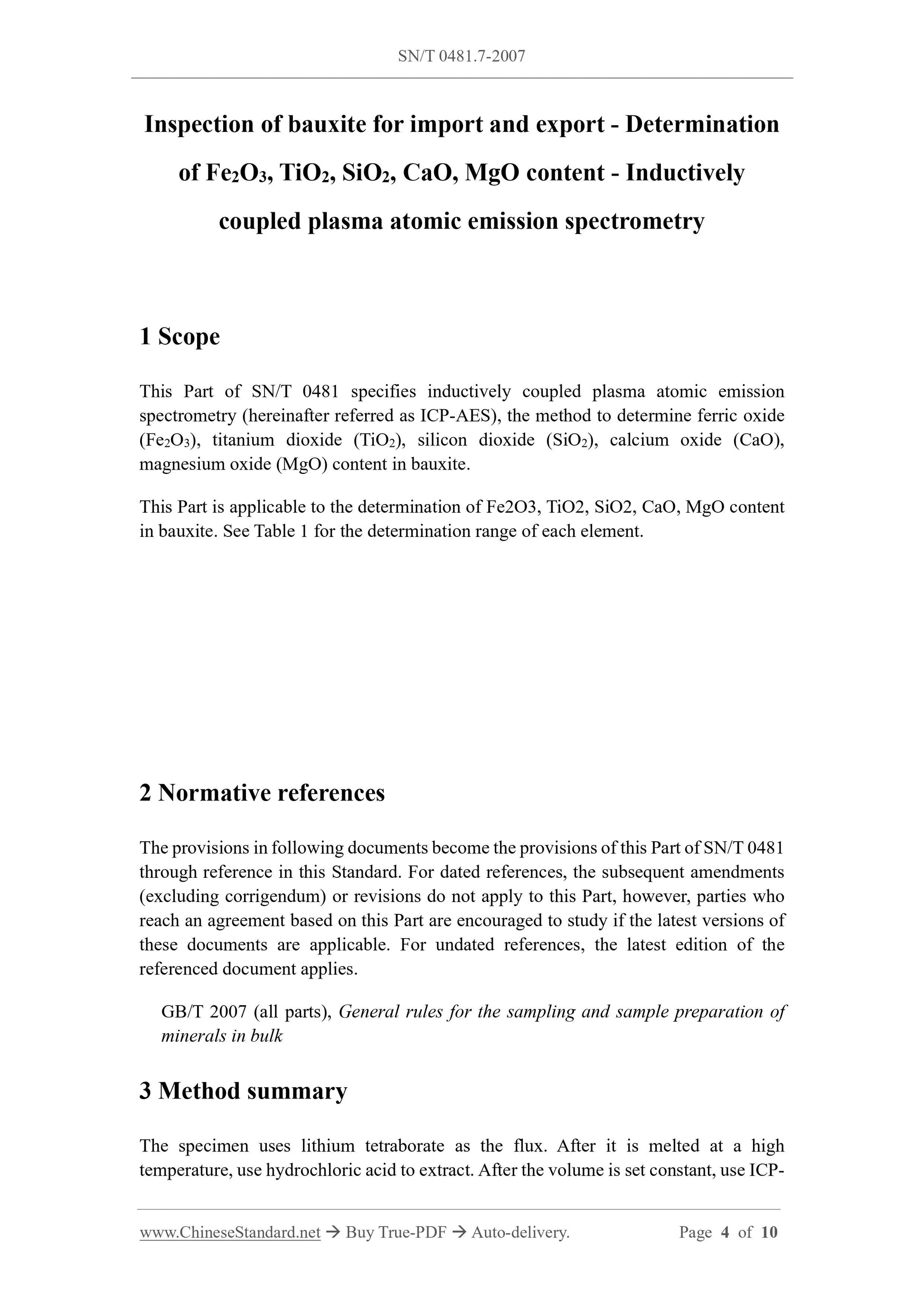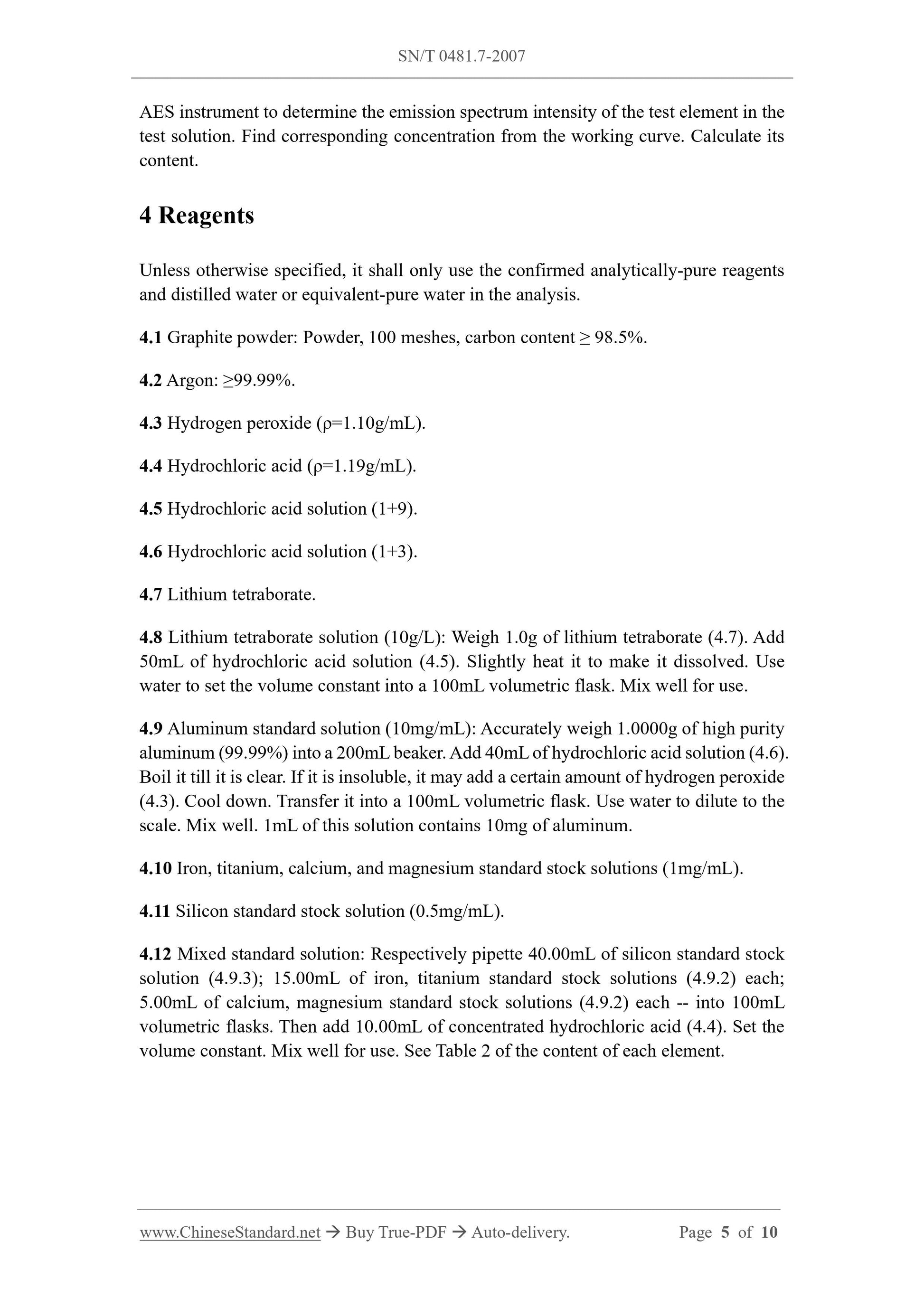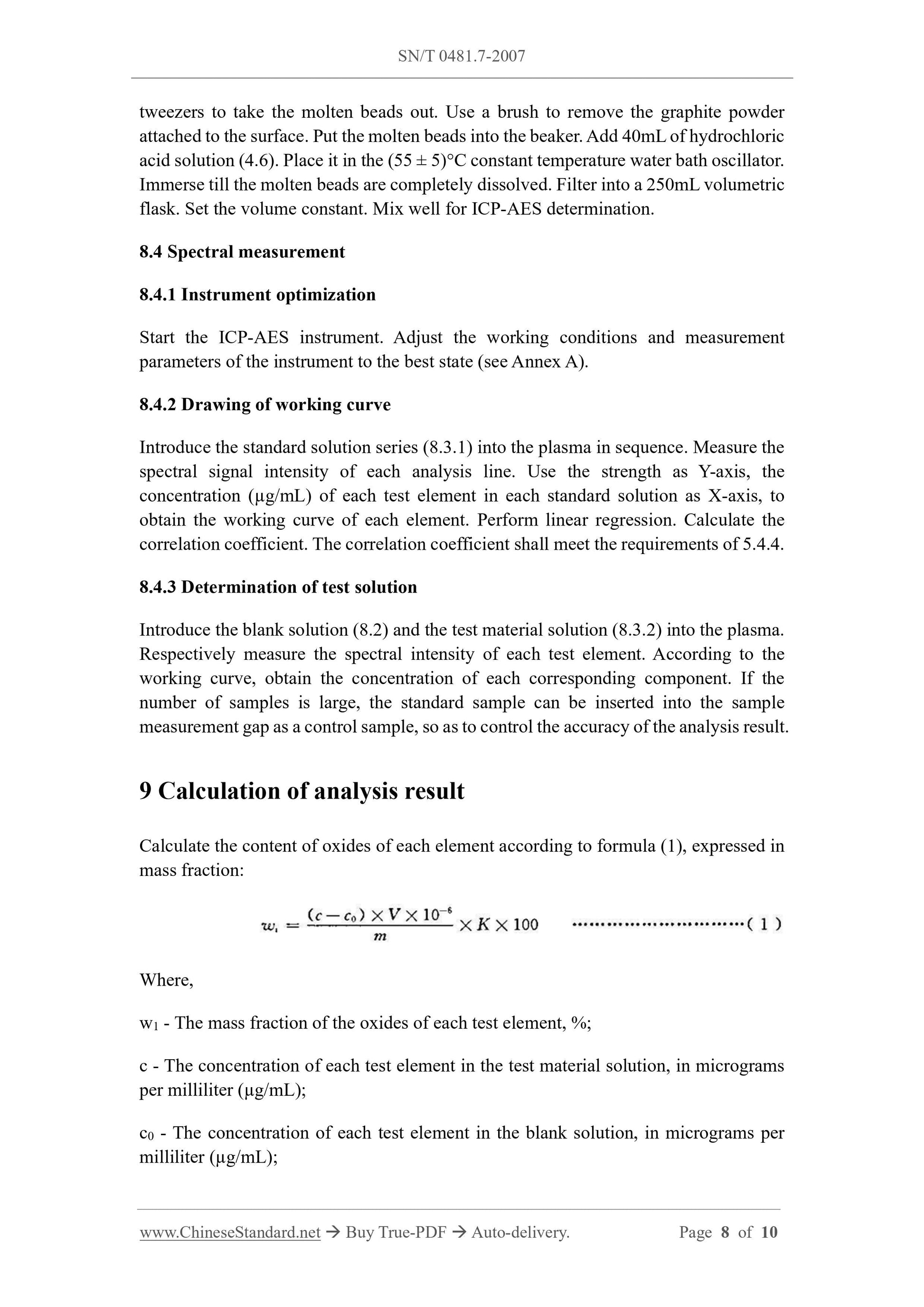1
/
of
5
www.ChineseStandard.us -- Field Test Asia Pte. Ltd.
SN/T 0481.7-2007 English PDF (SN/T0481.7-2007)
SN/T 0481.7-2007 English PDF (SN/T0481.7-2007)
Regular price
$110.00
Regular price
Sale price
$110.00
Unit price
/
per
Shipping calculated at checkout.
Couldn't load pickup availability
SN/T 0481.7-2007: Inspection of bauxite for import and export - Determination of Fe2O3, TiO2, SiO2, CaO, MgO content - Inductively coupled plasma atomic emission spectrometry
Delivery: 9 seconds. Download (and Email) true-PDF + Invoice.Get Quotation: Click SN/T 0481.7-2007 (Self-service in 1-minute)
Newer / historical versions: SN/T 0481.7-2007
Preview True-PDF
Scope
This Part of SN/T 0481 specifies inductively coupled plasma atomic emissionspectrometry (hereinafter referred as ICP-AES), the method to determine ferric oxide
(Fe2O3), titanium dioxide (TiO2), silicon dioxide (SiO2), calcium oxide (CaO),
magnesium oxide (MgO) content in bauxite.
This Part is applicable to the determination of Fe2O3, TiO2, SiO2, CaO, MgO content
in bauxite. See Table 1 for the determination range of each element.
Basic Data
| Standard ID | SN/T 0481.7-2007 (SN/T0481.7-2007) |
| Description (Translated English) | Inspection of bauxite for import and export - Determination of Fe2O3, TiO2, SiO2, CaO, MgO content - Inductively coupled plasma atomic emission spectrometry |
| Sector / Industry | Commodity Inspection Standard (Recommended) |
| Classification of Chinese Standard | D54 |
| Classification of International Standard | 73.080 |
| Word Count Estimation | 8,873 |
| Date of Issue | 2007-04-06 |
| Date of Implementation | 2007-10-16 |
| Quoted Standard | GB/T 2007.1; GB/T 2007.2; GB/T 2007.3; GB/T 2007.4; GB/T 2007.6; GB/T 2007.7 |
| Regulation (derived from) | National-accreditation-Science [2011] 63 |
| Issuing agency(ies) | General Administration of Customs |
| Summary | This standard specifies the inductively coupled plasma atomic emission spectrometry bauxite ferric oxide, titanium dioxide, silica, magnesium oxide content approach. |
Share
